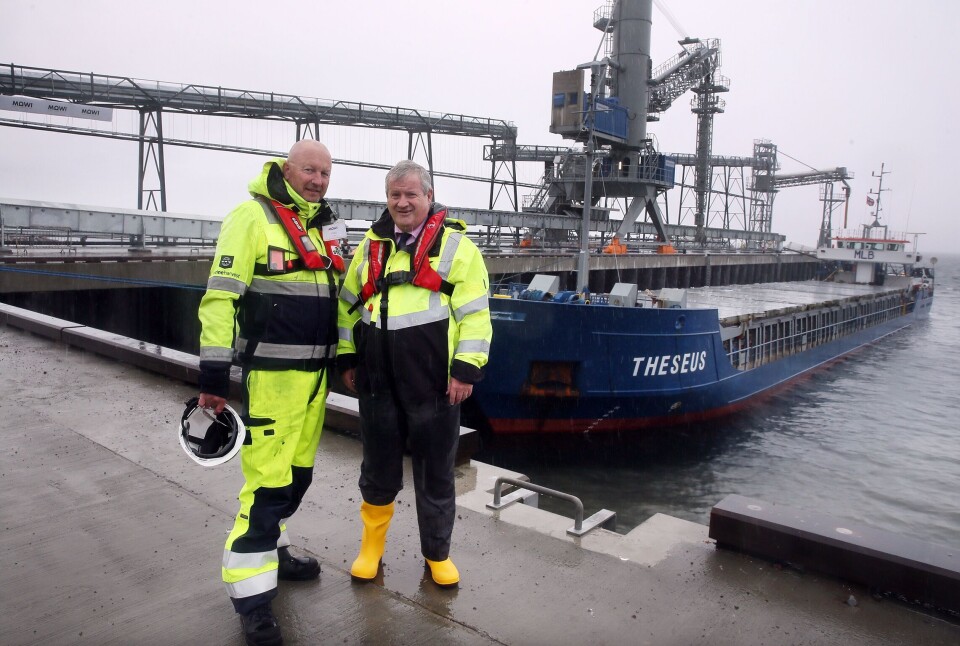
Quay moment: MP opens Mowi feed plant pier
The pier at Mowi Scotland’s £100 million-plus feed plant at Kyleakin on Skye was officially opened today by local MP Ian Blackford.
Blackford, the SNP’s leader in the House of Commons, congratulated Mowi on completion of the pier facilities, saying: “We should never underestimate the importance of the salmon farming industry to this part of the world.”
He added: “We are passionate about creating opportunities for young people and their families to live here and the salmon industry is playing an important role in that.

Milestone
“Food and drink are an important part of Scotland’s economy going forward and salmon is now our largest food export.”
The feed plant has taken around a year longer to build than originally envisaged, but the completion of the pier earlier this year was a major milestone in the construction process.
Mick Watts, Mowi’s project director and global engineer, who has overseen the project from its inception, said: “This is a big step forward for us as the pier facilities are an integral part of the company’s investment on this site. We’re also hopeful the plant will be finished in the coming months.”
Up to four vessels
The pier is used for the delivery of fuel and ingredients for the feed, as well as for the collection of the feed pellets for distribution to Mowi salmon farms.
It is 147 metres long from the quayside and 20m wide, 50m long at the North facing end and 45m long at the North quay face. It can accommodate up to four vessels at any one time on the four working areas. The water depth allows vessels up to 7000 DWT (Dead Weight Tonnage) to berth.
The Kyleakin plant will have the capacity to produce 170,000 tonnes of feed annually and will supply Mowi’s farms across the western Highlands and Islands of Scotland, as well as Ireland, Norway and the Faroe Islands. Some Scottish farms have already been receiving feed from the facility.
The plant is powered using liquified natural gas (LNG), which produces much lower carbon emissions than other fossil fuels. The LNG store at the site is the largest in Scotland and second only to the Isle of Grain, Kent.






















































